The process of evaluating new technologies can feel tedious but following these best practices will save you from headaches in the long run.
In the current economic climate, many organizations are turning to new technologies to increase automation and productivity and thereby lower costs. However, choosing the right technologies can be hard and even with careful planning and research, organizations can be left with serious buyer’s regret.
A recent survey from Gartner® observed this issue of buyer’s regret. It found that “Fifty-six percent of organizations said they had a high degree of purchase regret over their largest tech-related purchase in the last two years."¹
Factors that can contribute to buyer’s regret include slow purchasing decisions and ineffective evaluation, which can be caused by issues such as lack of focus and lack of information.
Here we share tips on how you can avoid these issues and thoroughly assess which Asset Performance Management (APM) solution is right for your organization.
Focus on the process and outcomes you want to achieve
Too often product evaluations turn into a box-ticking exercise. There are standard procurement, IT, and functional requirements to be met and those involved in the evaluation will review these one by one and give an equal or set weighting to each.
The problem with this approach is that it can be superficial and not provide a real-world view of what the solution will do for your organization in practice. For example, a vendor may tick the box to say their solution integrates with SAP, but that doesn’t tell you anything about how that integration works. For example, does data need to be manually extracted and pushed between the two? Or does data flow automatically from one to the other as part of the APM process? For example, can reliability-based tasks be automatically grouped together to form maintenance plans, and then created in SAP with the right associated Master Data?
For a more complete and effective product evaluation, you need to look at whether the solution supports your APM process and the outcomes you want to achieve. For example, if your main goal is automation, you need to evaluate how the functional aspects or features of the APM solution work together to achieve that.
For instance, if you are sitting through a demo and someone shows you how a criticality assessment is performed, ask them to show you what happens next. More specifically, ask how the data from that assessment flows through to asset strategy and work management. Questions like these focus on process, rather than individual functional requirements and will provide you with a more practical understanding of the solution’s capabilities and the benefits you can expect.
Invest the right level of time and resources in your APM evaluation
There’s only so much you can learn in a two-hour product demo. At the same time, no one has the time or resources to run a full proof of concept with every vendor.
To manage this contention, think about the investment you’re making and your expected return. If you expect a solution to deliver millions of dollars in value, it may make sense to run a small proof of concept with one or two vendors. At the very least, you should ask vendors to demonstrate how their solution can support your end-to-end process rather than just showing you their solution’s functional capabilities.
Additionally, when short-listing vendors, don’t just turn to your preferred vendors or base your decisions on information from vendor websites. It is a competitive marketplace, and most vendors don’t publish the level of detail you need to make a decision. So, take the time to speak with a number of vendors to learn more about their solutions and how they can help to meet your unique needs.
Involve the right people and lay the groundwork for them to be successful
Product evaluations should typically include a cross-section of experts. These include individuals from IT and procurement as well as reliability engineers and other subject matter experts (SMEs).
What’s important is that everyone is aligned on the requirements for the solution and the outcome it is intended to deliver. This may require a pre-evaluation to assess your existing APM process and decide whether you are looking for a solution that will simply automate that process or improve it. You may even find it useful to involve a vendor in these discussions. This can help you identify best practices and opportunities before putting together a prescriptive list of requirements.
Finally, setting clear goals early in the purchasing process enables teams to stay aligned throughout the decision-making process. This is particularly helpful for those stakeholders who may not be heavily involved throughout the purchase decision or if there is a change in the buying team.
For more information on what to consider when selecting an APM solution, check out our APM solution checklist.
¹Source: Gartner, “Gartner Survey Finds That Majority of Technology Purchases Come with High Degree of Regret”, July 12, 2022. GARTNER is a registered trademark and service mark of Gartner, Inc. and/or its affiliates in the U.S. and internationally and is used herein with permission. All rights reserved.


